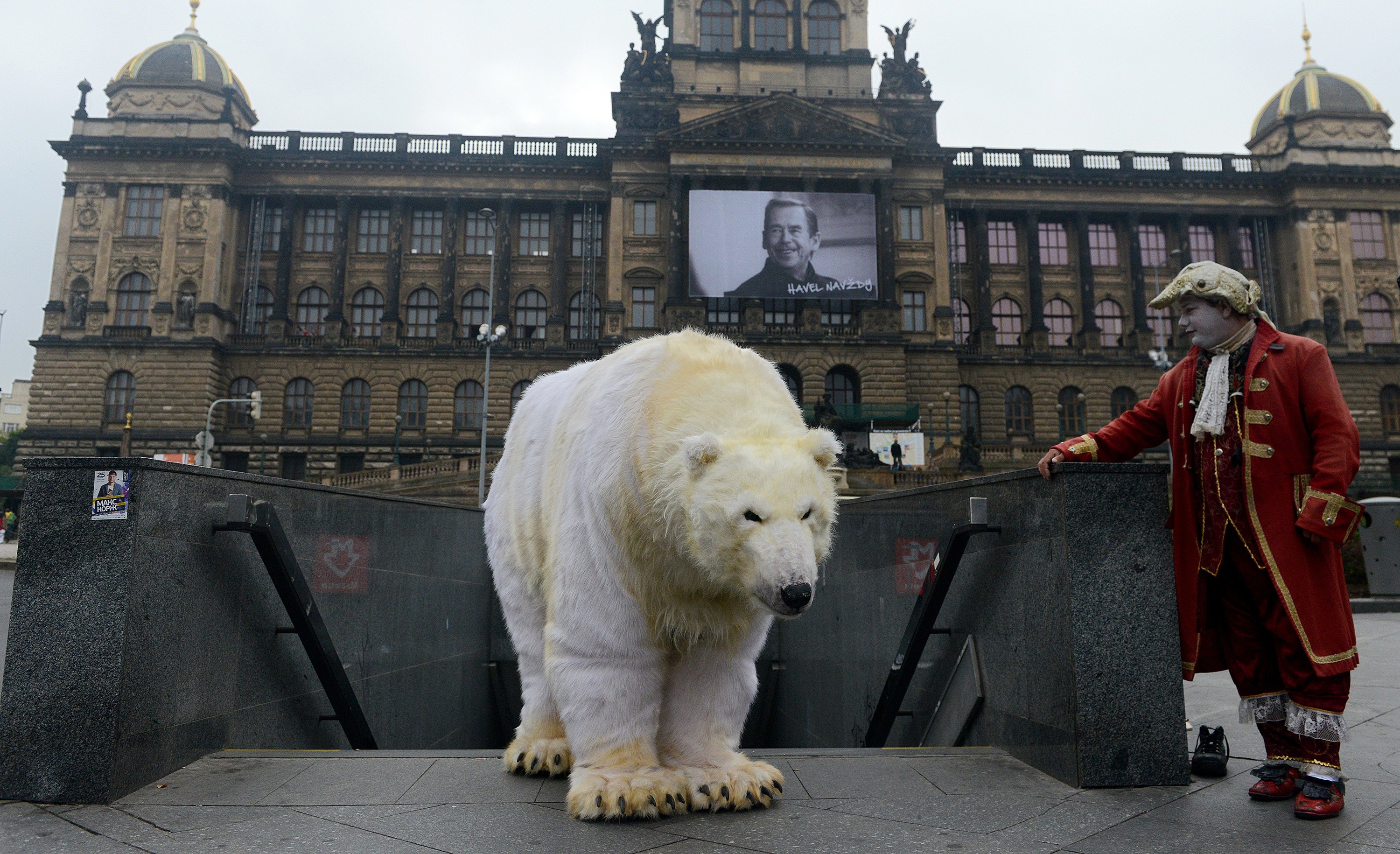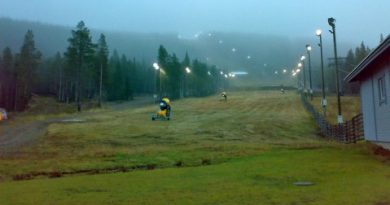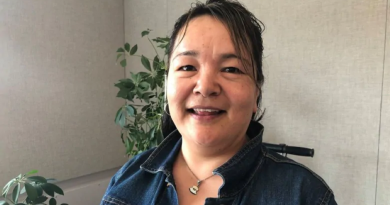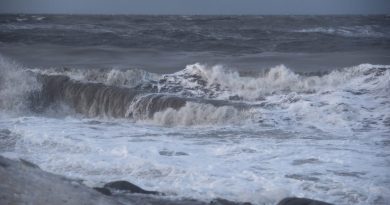Blog: #SavetheArctic… from Greenpeace

I take a deep and annoyed breathe every time I see a Greenpeace #SavetheArctic tweet, video, or article.
Not because I think climate change isn’t having a real and detrimental impact on the Arctic – it is. Not because their publicity stunts around the world have been embarrassing, destructive and foolish – though they have. Not because Greenpeace has a long history of marginalizing northern voices and inherent rights, although that bothers me too.
My problem with Greenpeace’s Arctic campaign is far more basic than that. My problem is that it is based on assumptions that are misleading, specious, and distracting from actual environmental issues needing attention in the Arctic. My problem with #SavetheArctic is that it does no such thing.
Sleek and Simple
I can’t argue that Greenpeace’s Arctic campaign isn’t sleek and attractive, and it has certainly had impact. It’s hard to know where Greenpeace’s Arctic stereotypes end and the popular media’s begin, because they have become one and the same. For Greenpeace, the Arctic is a place where ice is melting, polar bears are endangered, and oil is being drilled. Add in a flag-planting at the North Pole, which Greenpeace also executed, in April 2013, and I would say they’ve got the caricature nailed.
This is what one sees at savethearctic.org: a single page with some striking pictures and only 459 words, requiring less than 2 minutes for the average reader to absorb; a communicatively savvy move in the age of distraction. Visitors are invited to join roughly 6.5 million predecessors in signing the Greenpeace petition to “save the Arctic”. What are petitioners joining Greenpeace in calling for?: 1) defending polar bears; 2) stopping oil spills; and 3) saving our planet. I’ve got no problem in principle with those three goals, because they are unobjectionable.
Simplistic and Reductive
It’s Greenpeace’s reductive strategies that frustrate me. Their proposal for saving the Arctic – the propositions the petition will actually advance – are literally absent until the second last sentence of the page. Because they are redundant. Greenpeace plans to ask “world leaders” to create a global sanctuary in the uninhabited area around the North Pole; impose a ban on oil drilling; and ban destructive fishing in Arctic waters. None of these demands would have any impact on returning the Arctic to its pre-industrial state, and would play an insignificant role in mitigating current trends, leading me to believe Greenpeace’s main goal is to build awareness of itself.
Global sanctuary: I won’t take up space here to argue the merits for or against a sanctuary in the central Arctic basin, which Greenpeace describes as the area further than the Arctic coastal states’ 200 mile EEZ. I will only point out that there is next to no human activity occurring in that area, economic or otherwise, and never has been, and so establishing a sanctuary there will effectively preserve the status quo. It will do nothing to reduce the current rate or negate the impact of climate change.
Ban on oil drilling: Most people dislike the idea of oil drilling in the Arctic, not least because of the effectiveness of Greenpeace’s campaigns. My personal view is that sovereign nations and their citizens should make informed decisions about achieving balance between economic, social and environmental goals, and NGOs have a legitimate role in informing views. But my personal view does not matter here. Because it is not Arctic oil drilling that has compromised the Arctic ecosystem. In fact drilling has happened at a very limited scale in the Arctic thus far, and the high logistical risks, strict environmental regulations, and low oil prices are all conspiring to keep it that way. No one wants an oil spill in the future, and a ban might be desirable from that perspective. But since Arctic oil has had nothing to do with the climate change that is impacting the region and the globe, banning it will do little more, once again, than maintain the status quo.
Ban on destructive fisheries: Putting aside the fact that no one wants “destructive” fisheries, there are no commercial fisheries in the high Arctic yet, because: ice. The five Arctic coastal states agreed in March 2014 to apply the precautionary principle and look at a moratorium on Arctic fisheries until more is known about the situation and the way fish habitats are changing. I repeat myself – since there are no commercial fisheries in the Arctic, applying a ban on them is essentially preserving the status quo. And as we all know, the status quo is not nearly good enough.
What Happens in the South Doesn’t Stay in the South
All of these ‘strategies’ to protect the Arctic and save the planet are victims of spuriousness. Policymakers such as Admiral Robert Papp, the US Special Representative to the Arctic, have become fond of remarking that “what happens in the Arctic doesn’t stay in the Arctic”, and Greenpeace has made a slogan of “the Arctic affects us all”. But as Anthony Speca pointed out in the Arctic Journal, this has it rather backwards. What is happening in the Arctic is a result of activities caused by the 7 billion people who live south of the Arctic Circle. It is beyond me why so many environmental activists focus on restricting, banning and influencing activities in the Arctic rather than promoting bans and moratoriums on climate change-inducing activities in Europe and North America. The Arctic region is the victim of climate change, not its key perpetrator.
Poverty Porn, Green-Washed
The development industry has a name for the kind of marketing campaign that exploits and simplifies a social issue to elicit a strong emotional, and often, financial response, for the promoting agency, but does nothing to address the structural issues behind the issue in the first place: poverty porn. Most of us know this as infomercials depicting starving, fly-attracting, sub-Saharan children. The #SavetheArctic campaign is similar in kind if not in content, with the polar bear substituting as the soliciting object. (I’m considering calling it Green Porn, but am open to suggestions.) Because it is so utterly devoid of content, #SavetheArctic cannot claim to contribute to debate or policy on mitigating the impacts of climate change in the Arctic. Frustratingly, Greenpeace itself has a fair amount to say about climate change, and even the Arctic, on its main organizational webpage, but doesn’t link to any of it from savethearctic.org – not wanting to confuse its supporters with facts or information, I suppose. How self-defeating. This is the communications tail wagging the advocacy dog.
Harm Reduction
Greenpeace proponents will argue that #SavetheArctic has been incredibly successful in building awareness about environmental issues and Arctic climate change. But I would argue it mostly builds stereotypes, while giving its supporters a false sense of contributing to “saving” the Arctic when they are doing no such thing. In that sense, the campaign causes more harm than benefit. Other NGOs, governments, civil society actors and international organizations are taking constructive, realistic and productive steps to protect the Arctic – groups like the Arctic Council and its working groups, the IMO, IUCN, WWF, and others. Greenpeace has diverted 6.5 million people away from those efforts.
There is surely still a role for Greenpeace, with its high profile and extensive resources, to contribute to efforts to mitigate climate change and its impacts in the Arctic. Disappointingly, #SavetheArctic is not it.
Heather Exner-Pirot is the Managing Editor of the Arctic Yearbook, a Research Fellow with the EU Arctic Forum, and a member of the Board of Advisors for the Arctic Institute. She earned her PhD from the University of Calgary in 2011 and has held positions with the University of the Arctic and the International Centre for Northern Governance and Development. She is currently a Strategist for Outreach and Indigenous Engagement at the University of Saskatchewan.
Related stories from around the North:
Canada: Canada ponders exceptions to relief well rule for Arctic oil drilling, Alaska Dispatch
Germany: Acid Arctic Ocean and Russell Brand?, Deutsche Welle’s Iceblogger
Norway: Oil, Industry and Arctic Sustainability, Deutsche Welle’s Ice-Blogger
Russia: Melting permafrost eroding Siberian coasts, Deutsche Welle’s Ice-Blogger
United States: Lego cuts ties with Shell after Greenpeace campaign, Eye on the Arctic




Pingback: Eye on the Arctic » The Arctic – An Uncommon Heritage of Humankind
Every proactive effort that can be made to protect the Arctic environment deserves benign neglect or active support, but the issue is too big to indulge in demeaning any participants. We need sober cooperation to make the momentous changes required. Professionals, expressing personal annoyances in the public arena, create invented dilemmas, which the issue cannot afford. Let’s all move forward, employing whatever expertise we each have, supporting each other at every possible opportunity, keeping our eye on the ball: the survival of our species.
The article says that Greenpeace was flawed in its campaign because the three issues raised are not real issues and/or causes for climate change. Perhaps we can’t be that short-sighted and narrow-focused? Human beings will destroy what there is left of this world the minute there is the opportunity to profit from it – look at all the ‘excitement’ when the northwest passage became ice free, when it should have been a time for tremendous sadness.
Perhaps there are some who didn’t want to see ‘the status quo’ promised, knowing that sooner or later we would want to exploit/destroy that also, in the name of balancing development with and ‘managing’ our environment. (And referring to the ‘argument’ in the author’s 2012 July article on the same that was reprinted in the Alaska Dispatch News–just because I’m using the Internet and live down south, and am one of the culprits, doesn’t make the points above less valid.)